| USS Hornet (CV-12/CVA-12/CVS-12) |
|
Hornet tour
home >> Bridge & Pilothouse
|
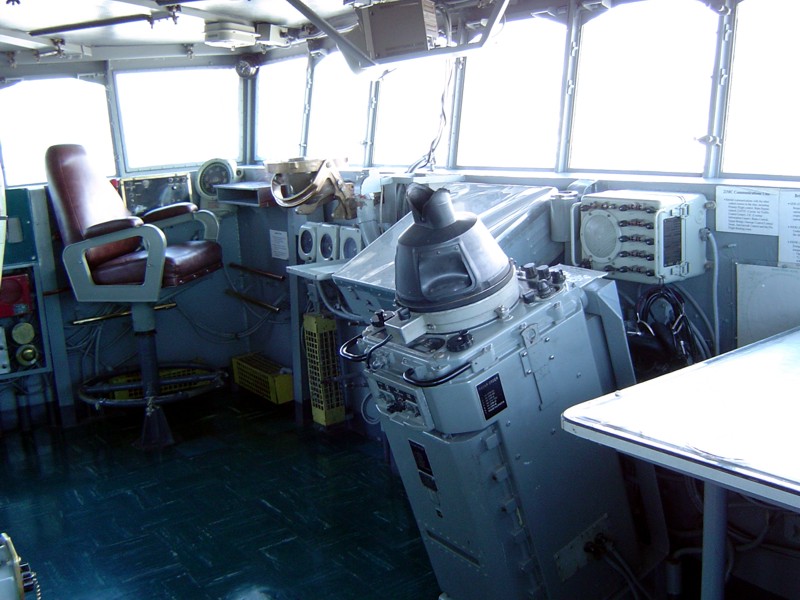
The bridge of the Hornet, with the captain's chair on its pedestal overlooking the flight deck. The large device with cylindrical viewing tube on the right side of the photograph is a radar repeater, giving the bridge team access to the same radar data available in the navigation spaces. Immediately to the right of the radar repeater is the navigator's manual plot table.
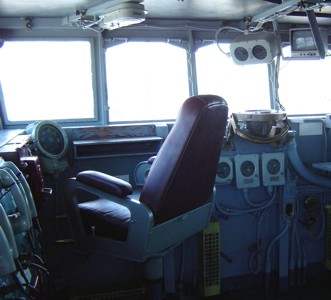
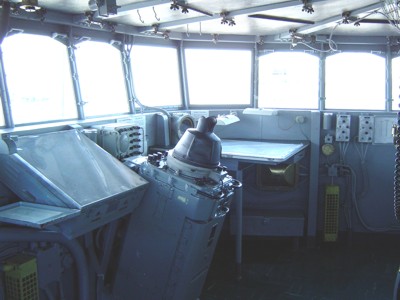
This bridge is technically known as the "navigation bridge," from which the Hornet's captain exercises command of his ship. However, Hornet was equipped to perform the functions of a flagship. When embarked, an admiral commanding a battle group or task force made use of a second "flag bridge," located immediately below this one.
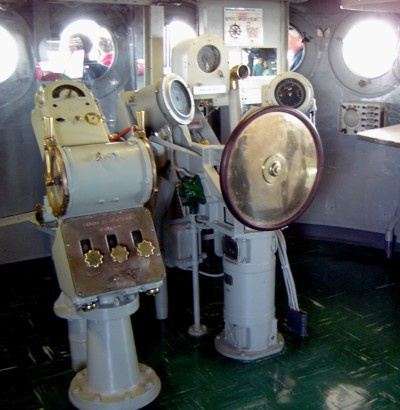 Pilothouse.
Behind
the captain's chair, and separated by a bulkhead with a series of
portholes, is the pilothouse, from which Hornet is
"driven." The
helm occupies the center of the pilothouse. The ship's wheel is
the large brass disc on the right. Throttle commands issued here are
telegraphed down to the engine room.
Pilothouse.
Behind
the captain's chair, and separated by a bulkhead with a series of
portholes, is the pilothouse, from which Hornet is
"driven." The
helm occupies the center of the pilothouse. The ship's wheel is
the large brass disc on the right. Throttle commands issued here are
telegraphed down to the engine room.
The door to the captain's private cabin is
located immediately behind the helm, which puts him no more than a few
steps away from the bridge at all times.
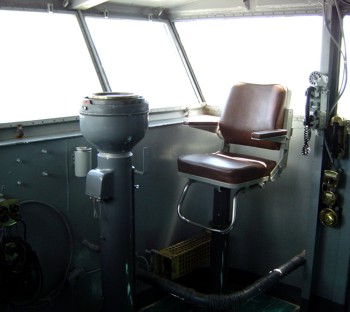 Auxiliary
Conning Station. The
auxiliary conn is located on the starboard wing of the bridge, outside the
pilothouse, and provides a clear view of the entire starboard side of the
ship. This is useful for shiphandling evolutions where judging
speeds and distances is critical, such as during underway replenishments.
Auxiliary
Conning Station. The
auxiliary conn is located on the starboard wing of the bridge, outside the
pilothouse, and provides a clear view of the entire starboard side of the
ship. This is useful for shiphandling evolutions where judging
speeds and distances is critical, such as during underway replenishments.
| July 21, 2003 || Return to Vulture's Row || Return to Home Page || E-mail |
| Copyright © 2003 Robin J. Lee <robin.lee@aya.yale.edu>. All rights reserved. |